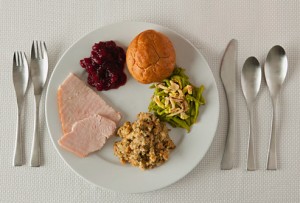Breaking Weight Loss Pre-conceptions
 Over the past decades the ‘cottage industry’ of weight loss has turned into an industry and a fast growing one at that. There are now theories and approaches to weight loss and millions of dollars spent every year on studies and research projects. And yet obesity costs us as a nation over 150 billion dollars a year and the cost is only expected to rise in the next few years, despite the government pushing back with a plethora of education programs about the risks of obesity. Our sedentary lifestyle and our industrial food industry have led us to this dead-end.
Over the past decades the ‘cottage industry’ of weight loss has turned into an industry and a fast growing one at that. There are now theories and approaches to weight loss and millions of dollars spent every year on studies and research projects. And yet obesity costs us as a nation over 150 billion dollars a year and the cost is only expected to rise in the next few years, despite the government pushing back with a plethora of education programs about the risks of obesity. Our sedentary lifestyle and our industrial food industry have led us to this dead-end.
Perhaps in a decade or so we might be able to turn the tide on the ‘obesity epidemic’ but most people want quicker solutions than that. So how can you lose weight quickly and , more importantly, how can you lose it on a budget?
The common wisdom is to eat less and work out more. An admirably simple plan but, unfortunately, one that usually leads to bland food or a never-ending diet of celery and carrot sticks alongside endless work-out sessions with a personal trainer or at an expensive gym. Whenever going on a diet people seem to focus on fat burning through exercise, while neglecting food as if it were the source of their ‘shame’. That is entirely the wrong approach.
A diet is not a sprint, it’s a marathon. If you get an expensive gym membership or a personal trainer and under-eat you’ll lose weight in two weeks then gain it back the second you quit your diet. If you starve and stress yourself for a month only to regain the weight with interest once you start eating normally again all the time and money invested into your weight loss will have been for nothing. Instead you should pace yourself. Reduce fatty foods to as close to zero as you can and slowly reduce portion sizes until you have a deficit of about 350 calories per day. Once you’ve done this you’re ready for the shocking part of this dietary approach:
Throw away all your food, quit your gym or fire your trainer and subscribe to an expensive pre-packaged food plan.
This might, at first seem like total madness. In fact it is exactly the opposite of what most people generally recommend that you do. But it makes sense. Remember that a diet is a marathon and while you can eat small portions or low-fat foods or no carbs etc. for a few weeks soon enough you’ll be back to your old dietary habits. An expensive pre packaged meal like the Nutrisystem (details at this link) offers you portion control that you have no say over and, more importantly variety and flavor.
The most important thing when you’re on a diet, especially a reduced portion diet is to make each morsel count. You won’t be eating half as much food so you better be eating twice as good dishes as before. That is the advantage that most controlled portion diets have over regular diets: your food comes pre-packaged so it looks and tastes better than something home cooked, being closer to a restaurant meal albeit a very small portion one. In fact that is exactly how the Bistro MD diet is billing itself. Getting rave reviews from the likes of doctor Phil as well as the author of the diet-centric blog mentioned earlier is chock full of a variety of foods like pork or delicious deserts usually on the forbidden food list under any diet ( See his blog for more yummy details). Besides, wouldn’t you rather be eating a small chicken quesadilla with a side of carrot sticks than a large plate of traditional diet food like steamed broccoli?
The biggest problem with these types of plans, however is the associated costs. Some daily delivery plans may cost you up to 500 or 600 dollars a month. More than worth paying for the certitude that you will be losing weight constantly. If you want to save money somewhere, do it in the exercise department.
A fancy gym membership can cost upwards of 70 dollars an month and a good trainer will charge over 50 dollars per session. This is money that you’re constantly throwing away. You don’t need to go to a gym to work out you can just as well build up muscle mass in the privacy of your own home through calisthenics and a pull bar, especially as your goal during the diet won’t be as much building as maintaining muscle mass. And the trainer? There’s an app for that. Your smartphone can now offer you most if not all of the guidance that a personal trainer can supply for 0.99 dollars or even for free. If you need to give up something to balance your budget, keep the expensive food and get rid of the trainer. The food will do more for your morale while dieting than the trainer.
Losing weight isn’t easy but it can be comfortable if you don’t give up the creature comforts and keep what’s important for you. You might be slowly starving yourself on a 1200-calorie diet but you might as well do it in style!
Related articles
- How to Lose Weight and Save Money on the Cost of Gas (savealittlemoney.com)

Category: Health





